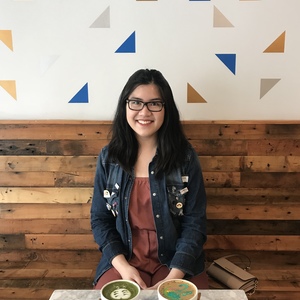When you go into a Chinese restaurant for brunch, you might find yourself wondering what an essential dish is that you have to order. You peek at other diners’ tables and notice small brown bamboo baskets, wondering “What are those?” That, my friend, is dim sum.
What is dim sum? Essentially, it’s a Chinese meal that features small steamer baskets or small plates of food. Though some specialty dim sum restaurants open mid-day, there are others that open at the break of dawn for those who start their day early. There’s no hard and fast rule on when to eat dim sum, but it’s typically eaten in the morning to afternoon. Below is everything you need to know before trying dim sum for the first time.
Origins of Dim Sum
Originally a Cantonese custom, dim sum was first served by tea houses to voyageurs along the Silk Road in China. Tea houses were frequented by farmers and traveling traders. The atmosphere in such venues was jovial and loud, much like modern dim sum houses.
Dim sum is still popular in today’s culture thanks to the same people who popularized it in the past: travelers. As more and more people migrated to different countries in search of a new life, they brought traditions from their respective cultures along with them. Dim sum is especially popular on the east and west coasts, because that’s where many Chinese immigrated to.
How to Eat Dim Sum
The process of making a dim sum dish is complicated, but that’s why it’s such an appreciated skill for chefs to have. It takes time, patience, and precision to finish crafting a dim sum dish. Dim sum dishes are handmade fresh from the kitchen, so cooking even just one dish is labor-intensive. The restaurant usually divides its kitchen team into smaller groups to handle specific tasks. Common groupings include preparatory, steaming, deep frying, fillings, and dumpling-making teams.
When enjoying dim sum, keep in mind that it’s served with an array of teas to wash everything down after you finish eating. Pick your tea before ordering; the most popular teas are Jasmine, Oolong, Pu’er, Green Tea, and Chrysanthemum.
Also, soy sauce (and ginger, if you like) is usually served alongside your dim sum. Go light on the soy sauce to taste more of the authentic dim sum flavors. For the same reason, take your time when enjoying each dish. Eat slowly, and try not to eat something in one bite.
#SpoonTip: If you’re struggling to eat the bite-sized dim sum foods, use your chopsticks in one hand and a spoon in the other for extra help.
The Most Popular Types of Dim Sum
There are two ways dim sum is served. The first way is in trolleys, where servers push a cart of bamboo baskets filled with various dim sum, and you point to what you want according to what you see. The second way dim sum is served is more formal, where you check off the dishes you want on a small slip of paper. There’s no fixed dim sum menu in every Chinese restaurant since there are so many dishes to choose from. However, there are a few key dishes worth familiarizing yourself with.
Har Gow—steamed shrimp dumplings that taste so divine. My personal Dim Sum fave.

Char Siew Pau—soft, steamed barbecued pork buns.

Siew Mai—open-faced steamed dumplings.

Chee Cheong Fun—steamed rice noodle rolls usually stuffed with shrimp, prawn, and you tiao (which is fried dough).

Xiao Long Bao—pork dumplings with a rich, hot broth on the inside.

Lo Bak Go—savory fried turnip cakes with a unique jelly-like texture.
Lo Mai Kai—sticky rice stuffed in lotus leaves.
Now that you know what dim sum is, you can feel confident in your ability to order without looking like an amateur. Sample as many dishes as you can to see which flavors you like best. But above all, make sure to take a few friends with you so you can enjoy the experience together.


